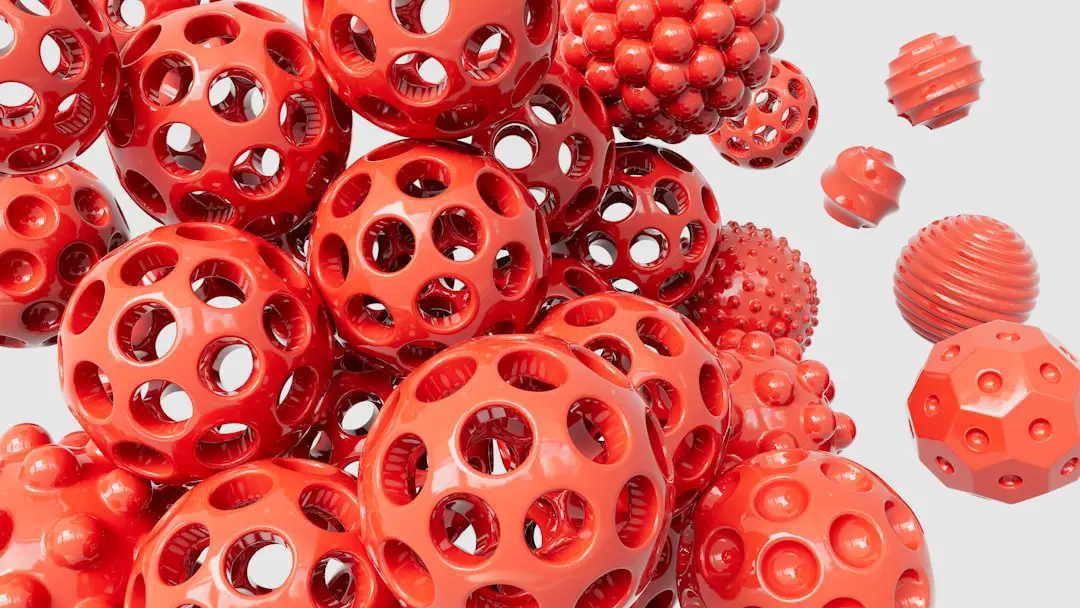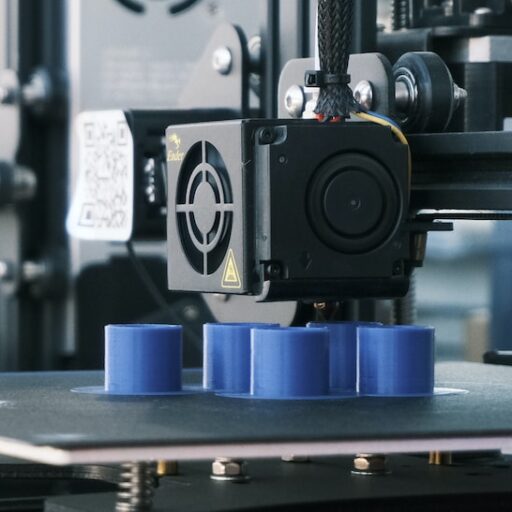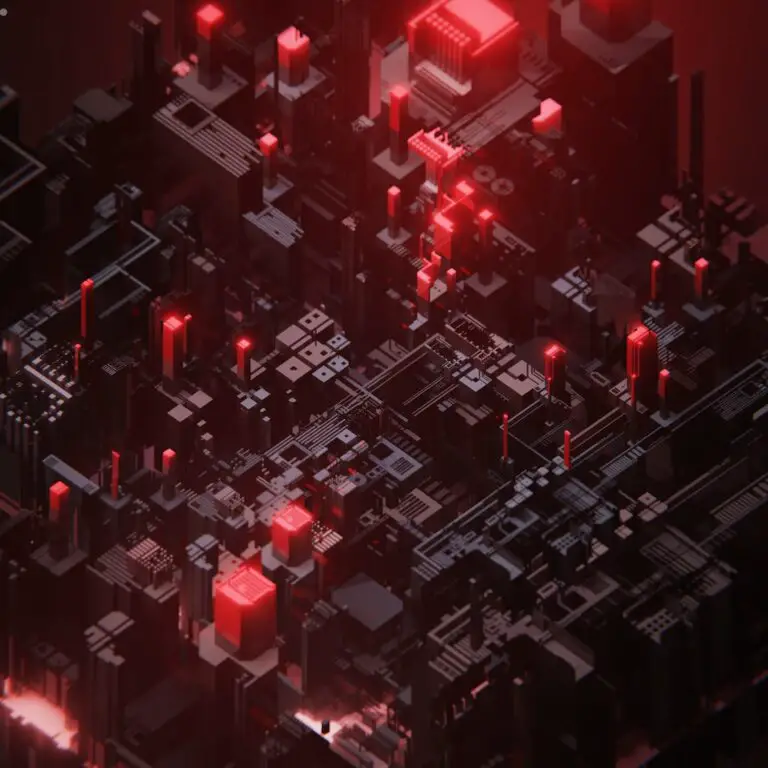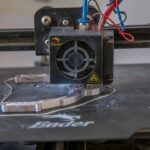Support our educational content for free when you purchase through links on our site. Learn more
Is 3D Printing Expensive for Manufacturing? 10 Key Insights to Know! 💡 [2025]
In the rapidly evolving landscape of manufacturing, 3D printing has emerged as a revolutionary technology, but many still wonder: Is 3D printing expensive for manufacturing? 🤔 With its ability to create complex designs and reduce waste, it promises a lot, but does it deliver on cost-effectiveness? In this article, we’ll dive deep into the costs associated with 3D printing, comparing it to traditional manufacturing methods and exploring the hidden expenses that can catch you off guard.
Did you know that companies using 3D printing for prototyping can reduce their time to market by up to 75%? 🚀 This staggering statistic highlights the potential benefits of adopting this technology, but it also raises questions about the initial investment and ongoing costs. Join us as we unravel the complexities of 3D printing costs, providing you with essential insights to make informed decisions for your manufacturing needs.
Key Takeaways
- Initial Investment: 3D printers can vary widely in cost, impacting your budget.
- Material Costs: The type of materials used can significantly affect overall expenses.
- Production Volume: 3D printing is often more cost-effective for low-volume production and customized parts.
- Hidden Costs: Maintenance, labor, and post-processing can add to the total cost.
- Sustainability: 3D printing can reduce material waste, making it a greener option.
Ready to explore the world of 3D printing? 👉 Shop 3D Printers on:
Let’s dive in and discover whether 3D printing is the right choice for your manufacturing journey!
Table of Contents
Quick Tips and Facts
Understanding 3D Printing Costs: What You Need to Know
The Evolution of 3D Printing: A Brief History
Is 3D Printing Expensive for Manufacturing? Breaking Down the Costs
3D Printing vs. Traditional Manufacturing: Key Differences You Should Know
3D Printing vs. Traditional Manufacturing: 10 Essential Factors to Consider
Materials Matter: Comparing Costs of 3D Printing Filaments and Traditional Materials
The Hidden Costs of 3D Printing: What to Watch Out For
Real-World Applications: When 3D Printing Saves Money
Future Trends: How 3D Printing is Shaping Manufacturing Costs
Conclusion: Weighing the Pros and Cons of 3D Printing vs. Traditional Manufacturing
Recommended Links
FAQ
Reference Links
Quick Tips and Facts
To get started with understanding the costs associated with 3D printing for manufacturing, it’s essential to consider the various factors that influence the overall expense. As we delve into the world of 3D printing at 3D Printed™, we’ll explore the design, functionality, and materials that contribute to the cost.
Understanding the Basics
Before we dive into the nitty-gritty, let’s establish a foundation. If you’re wondering how much it costs to make a 3D print, check out our article on the cost of 3D printing. This will give you a solid understanding of the initial investment and ongoing expenses.
Understanding 3D Printing Costs: What You Need to Know
When it comes to 3D printing, the costs can be broken down into several key areas:
- Equipment costs: The initial investment in a 3D printer, which can range from a few hundred to several thousand dollars, depending on the type and quality of the printer.
- Material costs: The cost of the materials used for printing, such as filaments or resins, which can vary depending on the type and quality.
- Labor costs: The time and effort required to design, print, and post-process the printed parts.
Calculating the Total Cost
To get a comprehensive understanding of the costs involved, it’s crucial to calculate the total cost of ownership. This includes not only the initial investment but also the ongoing expenses, such as maintenance, upgrades, and material costs.
The Evolution of 3D Printing: A Brief History

The history of 3D printing is a fascinating story of innovation and technological advancements. From its humble beginnings to the current state-of-the-art machines, 3D printing has come a long way. To learn more about the evolution of 3D printing, check out our articles on 3D Printing Innovations.
Is 3D Printing Expensive for Manufacturing? Breaking Down the Costs
Now that we’ve established the basics, let’s dive into the specifics. The cost of 3D printing for manufacturing can be broken down into several key areas:
- Initial investment: The cost of purchasing a 3D printer, which can range from a few thousand to several hundred thousand dollars.
- Ongoing expenses: The cost of materials, maintenance, and labor, which can vary depending on the type and volume of production.
Comparison to Traditional Manufacturing
When comparing 3D printing to traditional manufacturing methods, it’s essential to consider the production volume and complexity of the parts being produced. While traditional methods may be more cost-effective for high-volume production, 3D printing offers a significant advantage when it comes to producing complex or customized parts.
3D Printing vs. Traditional Manufacturing: Key Differences You Should Know
So, what sets 3D printing apart from traditional manufacturing methods? Here are a few key differences:
- Speed: 3D printing can produce parts much faster than traditional methods, reducing lead times and enabling faster time-to-market.
- Complexity: 3D printing can produce complex geometries and customized parts that cannot be produced using traditional methods.
- Material waste: 3D printing can reduce material waste and labor costs, making it a more sustainable and cost-effective option.
3D Printing vs. Traditional Manufacturing: 10 Essential Factors to Consider
When deciding between 3D printing and traditional manufacturing, there are several factors to consider. Here are the top 10:
- Production volume: The number of parts being produced, which can impact the cost-effectiveness of each method.
- Part complexity: The complexity of the parts being produced, which can impact the feasibility of each method.
- Material costs: The cost of materials, which can vary depending on the type and quality.
- Labor costs: The time and effort required to produce the parts, which can impact the overall cost.
- Equipment costs: The initial investment in equipment, which can range from a few thousand to several hundred thousand dollars.
- Maintenance and upkeep: The ongoing expenses associated with maintaining and upgrading equipment.
- Speed and lead time: The time it takes to produce parts, which can impact the overall efficiency of the production process.
- Quality and accuracy: The quality and accuracy of the parts produced, which can impact the overall effectiveness of the production process.
- Customization and flexibility: The ability to produce customized or complex parts, which can impact the overall versatility of the production process.
- Sustainability and environmental impact: The environmental impact of the production process, which can impact the overall sustainability of the operation.
Materials Matter: Comparing Costs of 3D Printing Filaments and Traditional Materials
When it comes to materials, the cost can vary significantly depending on the type and quality. Here’s a comparison of the costs of 3D printing filaments and traditional materials:
- PLA: A biodegradable and renewable resource, PLA is a popular choice for 3D printing. The cost of PLA filaments can range from $20 to $50 per kilogram, depending on the quality and brand. You can find PLA filaments on Thingiverse or Amazon.
- ABS: A strong and impact-resistant material, ABS is commonly used for 3D printing. The cost of ABS filaments can range from $30 to $70 per kilogram, depending on the quality and brand. You can find ABS filaments on Thingiverse or Walmart.
- Metal: A strong and durable material, metal is commonly used for traditional manufacturing. The cost of metal can range from $50 to $200 per kilogram, depending on the type and quality. You can find metal materials on eBay or Home Depot.
Comparison of Material Costs
Here’s a table comparing the costs of different materials:
| Material | Cost per Kilogram |
|---|---|
| PLA | $20-$50 |
| ABS | $30-$70 |
| Metal | $50-$200 |
The Hidden Costs of 3D Printing: What to Watch Out For
While 3D printing can offer significant advantages, there are also some hidden costs to watch out for:
- Maintenance and upkeep: The ongoing expenses associated with maintaining and upgrading equipment.
- Material waste: The waste generated during the printing process, which can impact the overall sustainability of the operation.
- Labor costs: The time and effort required to produce the parts, which can impact the overall cost.
Real-World Applications: When 3D Printing Saves Money
So, when does 3D printing save money? Here are a few real-world applications:
- Rapid prototyping: 3D printing can produce prototypes quickly and efficiently, reducing the time and cost associated with traditional methods.
- Customized parts: 3D printing can produce customized parts with complex geometries, reducing the need for assembly and minimizing material waste.
- Low-volume production: 3D printing can produce small batches of parts quickly and efficiently, reducing the cost and lead time associated with traditional methods.
Future Trends: How 3D Printing is Shaping Manufacturing Costs
As 3D printing technology continues to evolve, we can expect to see significant changes in the manufacturing landscape. Here are a few future trends to watch:
- Increased adoption: As the technology becomes more accessible and affordable, we can expect to see increased adoption across various industries.
- Improved efficiency: Advances in technology will enable faster and more efficient production, reducing labor costs and improving overall productivity.
- Sustainability: The focus on sustainability will continue to grow, with 3D printing offering a more environmentally friendly alternative to traditional manufacturing methods.
Conclusion: Weighing the Pros and Cons of 3D Printing vs. Traditional Manufacturing

In the grand debate of 3D printing vs. traditional manufacturing, the question of cost is pivotal. 3D printing can be a game-changer, especially for low-volume production and customized parts. With its ability to reduce material waste and speed up the production process, it offers a compelling alternative to traditional methods.
Summary of Positives and Negatives
Positives:
- Speed: Rapid prototyping and shorter lead times.
- Customization: Ability to create complex geometries and personalized products.
- Reduced Waste: More sustainable with lower material waste.
- Flexibility: On-demand production reduces the need for large inventories.
Negatives:
- Initial Investment: Higher upfront costs for quality 3D printers.
- Material Costs: Some materials can be expensive, especially for high-quality prints.
- Post-Processing: Additional time and costs may be required for finishing parts.
In conclusion, if you’re looking for a cost-effective solution for small batches or customized parts, 3D printing is definitely worth considering. It’s not just a trend; it’s a revolution in manufacturing that can save you time and money in the long run! 🚀
Recommended Links
- 👉 Shop 3D Printers on:
- Books on 3D Printing:
FAQ

What are the main cost factors in 3D printing for manufacturing?
The main cost factors include:
- Equipment Costs: The initial investment for a 3D printer can vary significantly based on the technology (FDM, SLA, SLS, etc.).
- Material Costs: Different materials have varying costs, with plastics generally being cheaper than metals and composites.
- Labor Costs: Time spent on setup, printing, and post-processing can add to the overall cost.
- Maintenance and Upkeep: Regular maintenance and potential upgrades can incur additional costs over time.
Read more about “What Percentage of Companies Are Using 3D Printing? 📊 …”
How does the cost of 3D printing compare to traditional manufacturing methods?
3D printing can be more cost-effective for low-volume production and customized parts, while traditional methods like injection molding are typically cheaper for large-scale production. According to Hubs, 3D printing often incurs lower setup costs, making it ideal for rapid prototyping and niche markets.
Read more about “How Much Does a 3D Printed Home Cost? 7 Key Insights for 2025 🏡”
Can 3D printing be cost-effective for low-volume manufacturing?
Absolutely! 3D printing shines in low-volume manufacturing scenarios. It eliminates the need for expensive molds and tooling, which can be a significant cost in traditional manufacturing. This makes it a viable option for startups and businesses looking to produce limited runs of products.
Read more about “10 Eye-Opening Statistics About 3D Printing in 2020 📊”
What are some strategies to reduce the cost of 3D printing in manufacturing?
- Optimize Designs: Simplifying designs can reduce material usage and printing time.
- Use Cost-Effective Materials: Selecting less expensive materials can significantly lower costs.
- Batch Production: Printing multiple parts in one go can reduce setup time and costs.
- Post-Processing Efficiency: Streamlining post-processing can save time and labor costs.
Read more about “What Company is Leading 3D Printing? Top 20 Innovators Revealed! 🚀 …”
What is the typical return on investment (ROI) for using 3D printing in manufacturing?
The ROI for 3D printing can vary widely based on the application and industry. However, many businesses report significant savings in time and material costs, especially when transitioning from traditional methods. According to Formlabs, companies can see a positive ROI within the first year of adopting 3D printing technology, particularly when used for prototyping and small batch production.
Reference Links
- Formlabs: How to Calculate 3D Printer Cost
- Hubs: How Much Does 3D Print Cost?
- ZMorph: 3D Printing vs Traditional Manufacturing
- McKinsey: The Future of 3D Printing
With all this information, you should feel equipped to make informed decisions about whether 3D printing is the right choice for your manufacturing needs! Happy printing! 🎉





